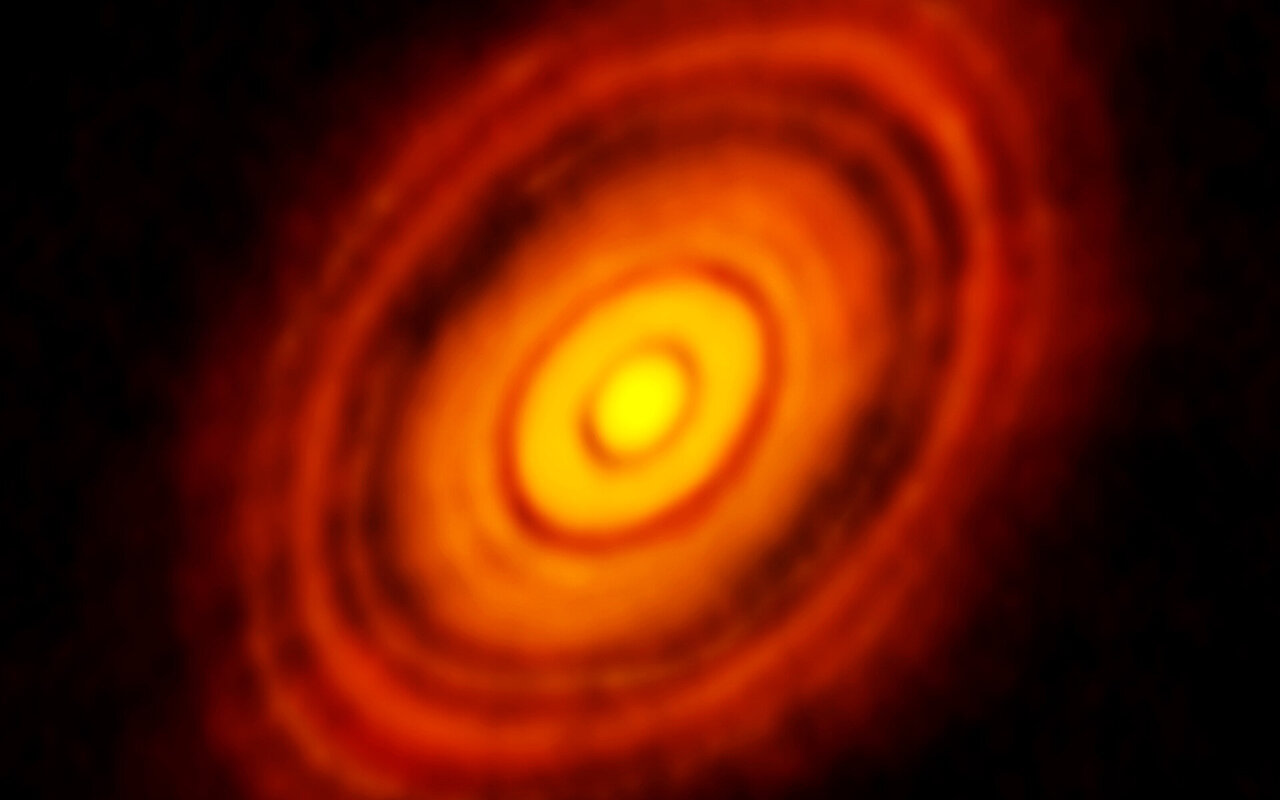
Hi Astronomy Fans!!
I'm back! It seems I can't stay away; your questions and enthusiasm are so great.
Looking forward to sharing more great astronomy with you.
Dr Joe


Hi Joe,
Hi Astronomy Fans!!
I'm back! It seems I can't stay away; your questions and enthusiasm are so great.
Looking forward to sharing more great astronomy with you.
Dr Joe
Hi Joe,
Why hasn't NASA or some other space agency like ESA or the Chinese Space Agency made another version of the Labelled Release Experiment on the Viking landers that seemed to have some positive indications in the search for microbial life on Mars. I heard Gilbert Levin who developed this experiment and just passed away recently was quite frustrated there wasn't further use of it on say Curiosity, Perseverance of the European or Chinese Mars landers.
Dr. Joe, what is your thinking about some new reports on the solar system evolving from a 3 ring protoplanetary disk, some examples are cited using stars observed by ALMA but HL Tauri and GM Aurigae contain very large disks too.
Here are two recent reports on the 3 ring protoplanetary disk model reported for our solar system.

Cosmic history can explain the properties of Mercury, Venus, Earth and Mars
Astronomers have managed to link the properties of the inner planets of our solar system with our cosmic history: with the emergence of ring structures in the swirling disk of gas and dust in which these planets were formed. The rings are associated with basic physical properties such as the...phys.org

Earth isn’t 'super' because the sun had rings before planets
Before the solar system had planets, the sun had rings -- bands of dust and gas similar to Saturn's rings -- that likely played a role in Earth's formation, according to a new study.www.sciencedaily.com
Just to compare, here is the 1977 MMSN model proposed, The Distribution of Mass in the Planetary System and Solar Nebula, https://ui.adsabs.harvard.edu/abs/1977Ap&SS..51..153W/abstract
Much has changed now in the studies of ALMA and various simulations used.
Dr. Joe et al. Space.com published their report on the ring model too, The sun used to have rings like Saturn, https://forums.space.com/threads/the-sun-used-to-have-rings-like-saturn.53464/
11-Jan-2022.
Dr Joe, I am quite intrigued by the fact that blackholes' masses are measured by gravitational lensing, as I read in this following recent article in Space.com, can you please explain it better to me and how exactly it works?
Joe... Why hasn't Perserverance Rover on Mars analyzed any of the sediments in the lake bed where it landed? Sending postcard landscapes home is fine but doesn't help the search for life. There should be evaporite mineral there after the water dried up.
Given all the advances in space scopes, but also in advances for amateur imaging, do you have any strong views on where serious amateurs who might be splurging on new gear should be considering? We plan to have a dome behind the new house we are building and I'm wondering what opportunities, perhaps pioneering ones, might offer the "best squeeze for the juice".
Exoplanetary work looks interesting. Especially the ones more earth-like around G-class stars. But when I calculate the transit time for Earth, as seen from far away, it is 13 hours. This lengthy time would take at least three nights of observing, and over 3 years to capture the profile, not that others at different longitudes couldn't work together, I suppose. Of course, the fast, big ones would still be interesting, but that's a lot of work, I fear.
Can you help us understand halo orbits at Lagrange points? I understand why craft like SOHO at L2 needed a halo orbit in order to transmit without having that bright object directly behind it fouling the transmission, but what is the need for a halo orbit at L3? I picture these points as spacetime dimples or gentle "wells" but why not just sit at the bottom of the well rather than circle it?
I know it doesn't really give the full "why" info, but it alludes to the reason.And because L2 is a location of gravitational equilibrium, it is easy for Webb to maintain an orbit there. Note that it is simpler, easier, and more efficient to orbit around L2 than to dwell precisely at L2. Furthermore, by orbiting rather than being exactly at L2, Webb will never have the Sun eclipsed by Earth, which is necessary for Webb’s thermal stability and for power generation.
Hi Joe,
Why hasn't NASA or some other space agency like ESA or the Chinese Space Agency made another version of the Labelled Release Experiment on the Viking landers that seemed to have some positive indications in the search for microbial life on Mars. I heard Gilbert Levin who developed this experiment and just passed away recently was quite frustrated there wasn't further use of it on say Curiosity, Perseverance of the European or Chinese Mars landers.
Hi Rod - Aren't those protoplanetary disks wild? There are several views of why there are gaps in them: One is the ice boundary view, and the other is that the gaps are being swept clean of material by newly formed planets. My colleagues in this area tell me the latter is gaining broader acceptance (though both are likely to be operating in any given disk).
I would be very surprised if our solar system didn't look like what ALMA has detected. For example:
https://www.space.com/infant-stars-planet-forming-disks-images.html
What would happen if our solar system was 1 or 10 or 100 lightyears from a two black hole collision
that create these gravity waves we detect in our LIGOs ?
Why is the night sky dark?
Dr. Joe. A much cherished belief, especially of children, is that we should be able to find our way using just starlight. Unfortunately, when we actually do venture out on a moonless light, the reality is far different and the available starlight is not enough to light the way. The question is why? Even a very cursory mathematical calculation should show that, given that light travels forever and the sheer number of stars in the Universe, unless something gets in its way, that the night sky should be much brighter than it actually is. Light should accumulate and reinforce itself till the night sky should be as bright as day. Why is that not the case? The present theory that it is the expansion of the Universe that is shifting stars and galaxies away from us and that is why the sky is dark at night, is simply too theoretical and simply to far from our experienced reality. Wouldn’t a far more acceptable explanation for why the night sky is dark be that our notion of how light travels is wrong? Light does not travel forever, just like any wave, think of waves in water or sound waves, light travels until the original energy which created the light can no longer sustain its existence and then it fades away and returns into the medium from which it came. When one thinks of dark matter and the fact that it allows all electromagnetic radiation to travel through itself without offering the slightest resistance, one realizes that dark matter possesses exactly the same properties that the aether was once thought to possess.
What a profound question Jzz, and one on many levels. I love questions like this because there are so many things to talk about.
First of all: In extremely dark conditions, with the Milky Way directly overhead, you CAN read by the light of the stars. I've been fortunate to have done so many times (especially in the dark skies at our observatories in Chile). It is a spectacular, unforgettable, and moving experience.
But those dark skies necessary to do this are rapidly disappearing because of light pollution. Many (most?) of my astronomy students have never seen the Milky Way because of light pollution. How sad....
There are solutions to light pollution, and many are being enacted. See, for example, https://www.space.com/39787-light-pollution-problem-you-can-help.html
In other areas, what you ask is deeply insightful and is what's known as "Olbers' Paradox": Why is the night sky not bright (like the surface of a star)? But to ASK this question you have to make some assumptions: The universe is uniform and infinite. In such a universe (uniform and infinite), everywhere you look you will see a photon from a star (no matter how far away it is). In this case (ol' Heinreich Wilhelm Olbers would argue), the universe should be uniformly bright.
The simple answer is that the universe isn't uniform and infinite.
In such a universe, you CAN have sight lines without photons coming to your retina. That is, there are places we can look and not see light from any source. Since this is the case for quite a few "sight lines", the night sky is dark.
I suspect I have already asked this in the past, but in case I haven’t... In my prior hunt for demonstrable evidence for the Sun’s true color - as seen in space properly attenuated - I have enjoyed learning about the physics of color that appears for many reasons (Rayleigh scattering, refraction, atomic emissions, etc.). For example, and related to my forthcoming question, the rich blue color that occasionally appears for most of Saturn’s northern hemisphere is a site to see. [This happens, apparently, due to a clearing effect that allows more Rayleigh scattering.]
Given the likelihood that the range of the number of nascent stars in the early solar neighborhood is about 1,000 to perhaps as many as 3,000 stars, per an earlier paper (IIRC), we would therefore likely have a couple of massive stars having formed, thanks to the application of the IMF (Initial Mass Function). As a result, a significant number of our new neighbors would also be extremely bright and would provide significant illumination upon our early solar accretion disk.
All of the above is to see if you know of anyone or paper that has addressed the possibility that such accretion disks would not look as artists color them but, like Saturn - blue to the human eye?
My suspect math indicates that a few bright neighbors could provide enough light to allow our photopic (color) vision to see color if it’s there. The disk being > 99% gas, and with the larger grains residing more in the middle, suggests to me we might see a blue or bluish disk due to Rayleigh scattering (like Saturn and reflection nebulae, though only a few have enough regional surface brightness [e.g. Eskimo nebula]).
Seeing these colorful disks, of course, in the optical band would be very rare, if ever, due to the embryonic residual cloud blocking our view, I suppose. Yet within this there might be windows in time where some blue disks reside, until the gas is eventually depleted, or our neighbors become too distant.
When Lemaitre showed Einstein his expansion model that included Slipher’s redshifts and Hubbles’s distances, introducing the first stab at an expansion rate, Einstein remarked that the math was fine but the physics was “abominable“.. So how’s my physics here? Are there experts in disk modeling that might have an interest in exploring this colorful idea that you know of off-hand?
iPad
Yes, and interestingly, without the redshift, we would indeed have a very bright universe with a BB distribution of ~ 3000K, sorta of a yellowish-orange I think.In reality, it will lose energy as the universe under it expands (i.e., redshift; and this is what the cosmic microwave background radiation is), and it's more likely an individual photon will not travel forever because it will be absorbed by gas, dust, other stars, retinas, etc.
Yes, and interestingly, without the redshift, we would indeed have a very bright universe with a BB distribution of ~ 3000K, sorta of a yellowish-orange I think.


